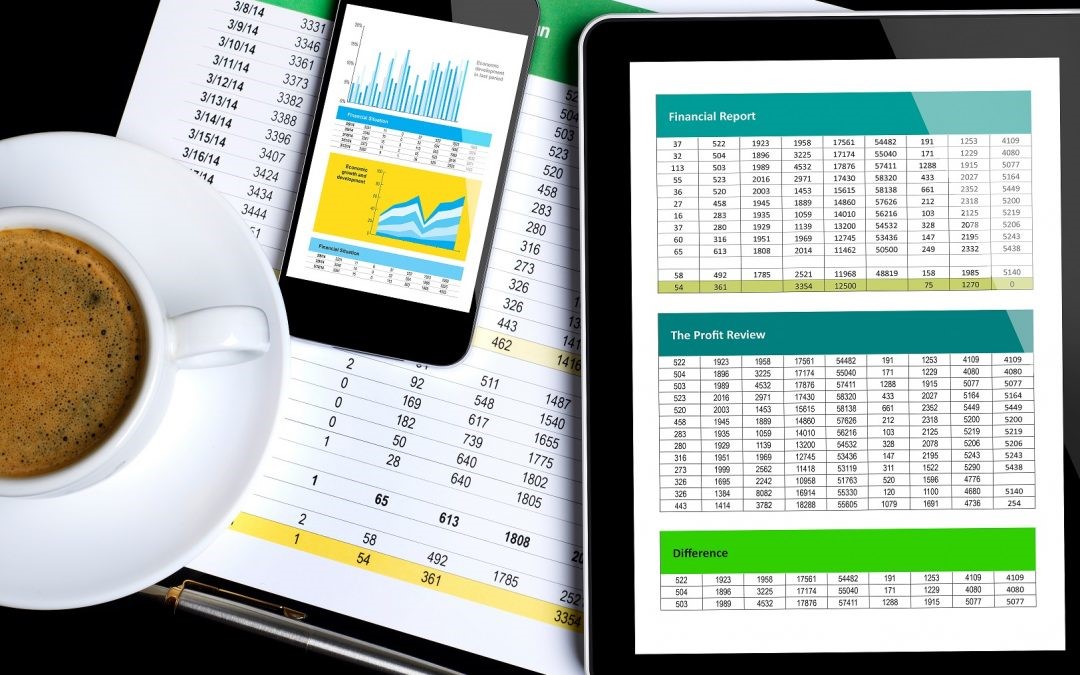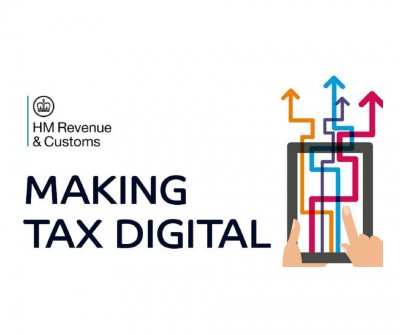How do I make my business more efficient?

1. Be More Business Efficient and Learn From The Best
We can all learn something from the world’s leading businesses like Apple, Google, Salesforce and Amazon. These firms have invested millions of pounds in order to find new and better ways to run their various business lines. Here are some tips that you can apply to your business to be more business efficient.
· Focus on creating an impeccable customer experience
If your firm is going to stand out in the current business environment, you’ll need to create an impeccable experience for your customers, who may be external (i.e. those who purchase your products or services) or internal (your employees, partners, suppliers and management team). As a business owner/manager, you probably tend to focus on building relationships with external customers. But by spending time focusing on your internal customers, you can make your firm a better workplace. You can help your internal customers become more efficient, dedicated and bought-into the company vision. This type of internal relationship management comes in many forms, including training, recognition / reward for top performers and taking time to listen to what your internal customers have to say by encouraging feedback. Google ensures that its researchers, engineers, and product managers all work together throughout projects, which creates feedback loops for Google’s projects. This feedback ensures that internal customers remain creative, empowered, and motivated. As a result, the management team is also better informed.
· Retain your employees
The best businesses focus on capturing the experience and know-how of their people. The purpose of a business is to serve its people, not the other way around. As such, you want your internal customers to be your biggest fans, because the growth of your company depends on it. Apple’s employees love the idea of working for their favourite tech-company. In order to retain these quality employees, Apple must ensure that it remains their favourite tech-brand. Communication is key to employee retention. The core messages should be that no ideas are too small and that there is no such thing as a silly question. Your employees should be encouraged to engage in open communication with people across your business. Another great way to retain employees is to create a work-life balance, which ensures that your people are mentally and physically healthy and happy. You can help by providing programmes that promote healthy living. Happy workers who love their job are far more likely to remain with your firm.
2. Be More Business Efficient and Practise A Healthy Level of Disagreement
· Face challenges together to make better decisions
You are likely to face challenges from time to time. Perhaps you and your colleagues disagree on the direction of a project, how a change should be implemented or a particular part of the firm’s strategy. Such disagreements are a necessary evil and can actually help your business to make better decisions. When it comes to disagreements at work, most people don’t want to engage in conflict and they often don’t know how to go about disagreeing. After all, agreeing is easier than speaking up and saying, “I don’t agree with you / your decision”.
· Learn from each other
However, a healthy level of challenge / disagreement should be encouraged. If you and your colleagues challenge each-other and continually ask if an approach is right or if there is a better approach to a particular problem, you are likely to end up with a better solution in the long run. Disagreements can often drive people in your business to come up with more innovative solutions. Encouraging people to work together through their disagreements in relation to things like strategy, approach, etc., you can actually encourage better working relationships. Disagreements can help your team members to focus on the big picture. If they disagree on something it forces them to weigh up the pros and cons of each possible solution. This should be done in the context of the overall strategy for your company. Your team will (hopefully) choose the solution that is most aligned with the vision and strategy of your business. If nothing else, disagreements are an opportunity for you and your team members to learn from each other, a valuable outcome for any business.
3. Be More Business Efficient and Value Your People
· Make them feel valued & recognised
Making sure your people feel valued is vitally important. People who feel valued tend to be more committed to their employers and also tend to go the extra mile, when necessary. One of the most important duties of any manager is to ensure that their team members feel that their work is appreciated. To ensure that your team feel they play an important part in your business, you need to recognise them as individuals. Team building events, office parties, etc. are great for boosting team morale but you also need your people to feel they are appreciated as individuals. Show recognition by asking them to share their views, contribute to a discussion or attend a conference in your place. This provides validation to them that they have something of value to offer, boosting self-confidence and self-esteem.
· Build your teams
Go one step further and involve your employees in making important business decisions. Invite them to contribute to a discussion on a new strategy or perhaps ask them for their thoughts on a new product or service line decision. This can also provide the firm with opportunities to consider new ideas to potentially drive innovation. Transparency is also very important. Your management team should let the wider organisation know what’s going on with your business. Keep them informed of the overall strategy and progress towards company objectives. This will demonstrate that you trust them and can create a feeling of “we are all in this together”. This type of approach goes a long way to boosting of your team members’ morale.
4. Be More Business Efficient and Create a Few Successful Habits for 2019
Getting ahead can be a struggle at the best of times. If you want to be successful, you need to be highly disciplined. Here are a few habits of highly successful business people. Perhaps one or two of these can become your new “good habits” for 2019.
· Read about your industry and beyond
Set time aside to read about your industry, related industries, current affairs, pop culture and what is trending around the world. Bookmark or tag articles that you come across throughout the day and come back to read them during your dedicated “reading time”.
· Cultivate a healthy mind and a healthy body
The most successful entrepreneurs focus on their mental and physical fitness. The two are inextricably linked. Most IronMan triathletes are senior business people and successful entrepreneurs. A good workout helps to clear your mind and prepares you to face the daily challenges of your business.
· Unplug
Time away from email, wifi and your computer is crucial for your sanity, productivity and general well-being. Try to switch off in the evenings and/or at weekends. Turn off your smartphone and focus on family life, friends and hobbies.
· Listen more
The best business leaders are those that realise they cannot be the best at everything. Your greatest asset is deciphering valuable information and actioning it quickly. Spend more time listening to your people, your customers and your peers in order to make better informed decisions.
· Get organised
Effective managers make lists and set daily goals to stay focused. Try to stay task oriented in order to keep on track. Schedule regular planning meetings in order to map out progress towards the achievement of the vision and goals of your business. This can help you to focus on the big picture.
· Focus on your objectives
De-prioritise things which do not fit with the achievement of your objectives. Write down your key objectives. If something comes up which does not (in some way) support the achievement of your goals, de-prioritise it or if necessary, just say no. Keep focusing on your key objectives and focus on being productive.
Digitaccs can help you and your business succeed and make it more efficient. To find out how, please contact us now on 020 3367 1108!
Tax Deductible Expenses For Sole Traders

If you are a sole trader, the expenses you can claim are subject to complex rules. We recommend consulting a Chartered Accountant before submitting your accounts. The following points can however provide general guidance.
Do you work from home?
Did you know that as a sole trader, you can charge a proportion of household expenses to your business? The following expenses will need to be logged effectively to best support your books and tax return.
Telephone & Broadband
You should monitor and log the number of calls you make, which are personal, and business related, or log how many hours your broadband is used for business purposes against your broadband / phone’s total usage. Adopting this approach will give you a robust method of apportioning your business / private usage.
General household expenses
These are harder to monitor. Plus, if you dedicate part of the home you work from, you will need to consider whether there might be a Capital Gains implication, should you choose to sell your property in future. The simplest method here is for you to work from home on a non-exclusive basis and charge £4 per week to your business. It’s not just the accrued expenses whilst working from home that you can expense (claimed against tax), other business expenses can be considered too.
Website
Your ongoing hosting costs are tax deductible; however, the actual cost incurred in development is capital expenditure. And, there might be occasions when such expenditure might qualify for R & D credits.
Advertising, PR and marketing
Other advertising, PR and marketing costs are also business expenses, but business entertainment is not tax deductible.
Mileage
HMRC’s approved mileage rates make it easy for you to claim your travel costs. Car travel is calculated at 45p per mile for the first 10,000 miles, and then 25 per mile after that threshold has been met. Motorbikes are 24p per mile and bikes are 20p per mile. This only applies for your business-related journeys and not your mileage to and from work.
Business insurance policies
Expenditure on your professional indemnity, public liability insurance etc. is a fully allowable as a tax deductible expense.
On-going training
While courses to keep your skills up to date are tax deductible, retraining and courses to acquire completely new skills, are not.
Fees for other business services
Expenditure on your lawyer or accountant is sometimes allowable for tax purpose. For example, in respect of the renewal of a lease or the preparation of year end accounts support. However, there can be other times when the expense incurred is not eligible to be treated as an immediate tax write off. For example: your legal fees when incurred while acquiring a new lease, or your accountants’ costs incurred in the preparation of a personal tax return.
Business related subscriptions
Business related subscriptions such as magazines, trade papers, and your payment for certain recognised professional organisations etc. are tax deductible.
Note:
To best support your tax return, always keep hard or digital copies of your receipts. There are numerous apps available which allow you to capture images of your receipts and store for such purposes.
Digitaccs can give you more guidance on these complex areas and ensure you are fully compliant. So please contact us on 020 3367 1108 now!
5 Ways To Raise Finance – Where To Start?

Raising finance for your business: Where to start?
To help you kick-start your business, there are several ways in which you could raise finance to get your idea underway or to further accelerate your growth. At the time of writing, these are the most common routes for you to explore to raise finance. However, new offerings for finance are constantly evolving in line with financial innovations – so we recommend you keep a close eye on what’s happening. For now, these are the recommended routes, meaning you don’t have to rely exclusively on traditional avenues, such as banks, to raise funds.
Raise Finance & Keep it in the family
When transforming a new idea into a business and raise finance, you could first go to your friends and family to help raise funds. Whilst many start-ups do this to help fund their new venture, it is advisable you seek legal advice to ensure you capture all aspects of your agreement, in writing. This could be a simple contract between parties, including a detailed business plan and financial forecast for their review. This will help prevent challenges that may appear in future, protecting your business and the investments of your friends and family. Most importantly, it will help you maintain your personal relationships.
Raise Finance: Business Angel investment
An effective way to raise finance is to look into Angel Investments. It is a means, for private and industry investors, to explore opportunities to use their personal finance, in exchange for shares in your business. Their expectation is usually for a return on their investment, between three and eight years. The good news here, is that Angel Investors typically play an active role in your business, offering support and guidance to your strategy and plan. Obviously, an investor familiar with your industry would, in most cases, be the best choice. For more information, the UK Business Angels Association is a good place to start.
Raise Finance: Crowdfunding
One option, rather than asking a few people to contribute large sums in order to raise finance, is to ask a large amount of people to each invest smaller amounts. This is known as Crowdfunding, which can take several forms:
- Equity (when the investment is exchanged for shares or for a stake in your business)
- Debt (when the money is provided with the view to receive money back with interest)
- Donations (when people believe in your idea and base their contribution on their belief in that cause). Donors will expect nothing in return for their provision of funds.
Raise Finance: Grant and Loans for Start-Ups
The government aims to accelerate the UK economy, and as such, provides grants and loans for businesses. Grants are where a portion of taxpayers’ money is saved each year, to drive new business ideas. With the money offered nationally, you will need to apply, so the government can assess whether you are eligible for a grant. Start Up loans are provided through a government scheme aimed at entrepreneurs, with the average loan estimated at £6,000. Some loans can be increased up to the value of £25,000, however, they need to be supported by twelve months of business mentoring. You must repay any loans back within five years, typically with an interest rate of 6%.
Digitaccs can support your business and help you succeed. To find out how, please contact us on 020 3367 1108.

HMRC announces delays for MTD (Making Tax Digital) for Individuals
MTD and Digital Systems
You should know that in early May, HMRC issued an e-mail to stakeholders acknowledging the result of the 2016 EU referendum had resulted in major changes in priorities for the department. Which means HMRC is now being required to deliver essential programmes to support access to European markets and boost worldwide free trade. Many of these projects, which MTD is part of, will need to be underpinned by sophisticated digital systems. At the end of 2017, HMRC had 15 major programmes and more than 260 running projects. It is hardly surprising, in this context, that Jon Thompson, HMRC’s Chief Executive, felt the need ‘to take a step back and look carefully at what we could, and should deliver in light of those challenges.’
Simple Assessment on hold
The reorganisation of priorities includes halting expansion of the rollout of Simple Assessment (the removal from Self Assessment of those with limited taxable income from pensions or employment) and suspending real-time tax code changes. ‘The things that we’re stopping or pausing will slow our journey,’ Thompson continued, ‘but they don’t change our overall ambition to become the world’s most digitally-advanced tax authority. But crucially, they will allow us to support EU Exit while continuing to deliver ambitious changes for our customers.’ In its e-mail, HMRC acknowledged: ‘While our transformation is on track, it hasn’t all been smooth sailing. We were overly ambitious about the number of customers who would stop contacting us by phone and post after we introduced digital channels. Demand is falling, but not by the amount assumed in 2015.’
VAT-MTD remains on track
HMRC, however, remains on track to deliver VAT mandation in 2019, for the VAT-registered with a turnover above £85,000. Indeed, a limited pilot has just started. However, the convergence of business taxes into a new single system (ETMP) – from HMRC’s many legacy systems – is set to somewhat slow things a little. But the department states this will not impact on the delivery of Making Tax Digital.
MTD for individuals slowed
While this might be the case for MTD for business, clearly this is not the position for MTD for individuals. Back in his March 2015 Budget, the then-Chancellor George Osborne promised us the death of the tax return. It seems that the demise of the self-assessment tax return has been greatly exaggerated – at least for the time being.
HMRC highlights
In the e-mail, HMRC also took the opportunity to list some of its transformation highlights, including:
- More than 15 million people now have Personal Tax Accounts, which were accessed 32 million times last year.
- Three million businesses now use Business Tax Accounts.
- Powerful new data sources helped to secure a record £28.9 billion through compliance work last year.
QuickBooks files first MTD-compliant VAT return
In what can only be described as a momentous achievement for Intuit, QuickBooks, the world’s leading online accounting software provider, has submitted its first Making Tax Digital (MTD) VAT filing to HMRC – through QuickBooks Online on 15 May 2018. Dominic Allon, Vice President and Managing Director of Intuit Europe said ‘There has been a lot of talk about Making Tax Digital, but with the official roll-out fast approaching it’s crucial that we offer a simple, fast solution to help accountants file their taxes digitally. We’ve been working closely with HMRC, taking part in workshops, insight sharing sessions and hackathons to ensure the product is developed in line with the VAT requirements set by HMRC, and to make life easier for our customers.’ QuickBooks is set to continue working closely with all its stakeholders – government, accountants and small businesses – to ensure that it fulfils its ongoing commitment to deliver a best-in-class experience for individuals and organisations that wish to file tax digitally. For more information on how QuickBooks Online can help your business be ready for MTD, please contact us on 020 3367 1108.
Digitaccs can work with you to make sure your accounting systems are MTD compliant. To find out how, please contact us on 020 3367 1108.
Making Tax Digital For VAT Guidance Issued

Making Tax Digital For VAT Guidance Issued
HMRC have now issued their detailed guidance on the digital record keeping and return requirements for Making Tax Digital (MTD) for VAT. VAT Notice 700/22 clarifies that spreadsheets may still be used to keep your business records, provided there is a bridging software linking to the Government gateway. You will however get a one year “grace” period during your first year of MTD when your business will not be required to have digital links between software programs, referred to in the VAT Notice as a “soft landing”. You will see that the VAT notice includes a number of helpful examples, illustrating different accounting systems, and the digital links required to comply with MTD for VAT. This is essential reading if your business is VAT registered.
When Does MTD For VAT Start?
The Making Tax Digital rules apply from your first VAT period starting on or after 1 April 2019. A ‘VAT period’ is the inclusive dates covered by your VAT Return. For example, if your business submits quarterly returns covering the periods to 28 February, 31 May, 31 August and 30 November, then your business will need to comply with Making Tax Digital rules for the VAT quarter starting 1 June 2019 and ending on 31 August.
“Soft Landing” For MTD For VAT For The First Year
For your first year of MTD for VAT (VAT periods commencing between 1 April 2019 and 31 March 2020), your business will not be required to have any digital links between software programs. The one exception to this, is where data is transferred, following preparation of the information required for the VAT Return, to another product (for example, a bridging product) which is an Application Programme Interface (API). Enabled solely for the purpose of submitting the 9 Box VAT Return data to HMRC. Your transfer of data to this product must be digital. For your first year of MTD for VAT (VAT periods commencing between 1 April 2019 and 31 March 2020), where a digital link has not been established between any software programs, HMRC will accept the use of cut and paste as being a digital link for these VAT periods. However, for VAT periods starting on or after 1 April 2020, you must establish a digital link for any transfer or exchange of data between software programs, products or applications used as functional compatible software.
Use Of Spreadsheets In Preparing VAT Returns
Example 3 in the VAT Notice describes a business using a spreadsheet and bridging software from April 2019, which allows the information to be transferred to HMRC via an API. It uses a spreadsheet to record all sales, purchases, and expenses in a digital format. Your VAT Return is then prepared within the spreadsheet, using formulae already written into the spreadsheet. Your VAT Return information is then sent via a mandatory digital link to a bridging software, which digitally submits your information directly to HMRC. Example 6 shows how a spreadsheet would be acceptable in order to consolidate your VAT information prior to submitting your Group VAT return.
Digitaccs can help support you and your business with the complexities of these tax and payment rules and help you get ready for this significant change in VAT accounting and reporting. To find out how, please contact us on 0203 367 1108.
MTD For VAT – Does My Accounting System Comply?

Making Tax Digital for VAT – MTD for VAT
You may have heard that Making Tax Digital for VAT, or MTD for VAT, is scheduled to start in April 2019 which means that your VAT information needs to be submitted to HMRC digitally.
HMRC Legislation
On 18 December 2017, HMRC published draft legislation together with examples of how your business account records might link with the HMRC computer in order to comply with MTD for VAT. The legislation specifies that “functional compatible software” must be used to record and preserve prescribed VAT related data.
What are Digital records?
“Functional compatible software” must be used to calculate your VAT due, report your VAT figures (as per the current VAT return) to HMRC, and to receive information back from HMRC. VAT related data for each sale and purchase made by your business includes the time of the supply, the value and the rate of VAT charged, or in the case of purchases, the amount of input VAT allowed. There is no requirement in the draft regulations that the electronic recording of this data must be done at the time the supply is made, or when the purchase is received. As long as the data is recorded electronically by the earlier of the date that the VAT return must be submitted or is actually submitted.
Digital Links in the Trail
Your business can use more than one piece of software to keep its digital records, but those separate software programmes must be “digitally linked”. HMRC provides examples of what it means by digitally linked in the draft notice. One example of this, is a business which uses one piece of accounting software to record all sales and purchases, this software then calculates the return and submits it to HMRC. As well as the records in the accounting software, the business uses a spreadsheet to keep track of a fleet of cars and work out its road fuel scale charges. The draft guidance suggests that the business can type the adjustment into its accounting software.
HMRC Website
For more information, visit HRMC site on Making Tax Digital for Business and on MTD for VAT.
Digitaccs can of course work with you to make sure your accounting systems are in compliance with the new VAT rules before they start in 2019. You should note that MTD for VAT will not be mandatory where turnover is below the VAT registration limit, currently £85,000 per annum. To find out how we can help you and your business, please contact us on 020 3367 1108.
Making Tax Digital for VAT – Don’t join until you read this!

Making Tax Digital – Growing confidence
It’s official! If you are a Sole trader or a company with up-to-date VAT affairs, you are now able to join HMRC’s test phase for VAT Making Tax Digital (MTD). While testing of VAT-MTD started last April, until now, it has been on a limited, controlled, invitation-only basis. In what can be taken as a clear indication of the department’s confidence, the VAT MTD pilot has now been opened to accept everyone.
New Guidance
In support of the public test phase, you can now consult a suite of new and updated guidance, available to help you, VAT-registered businesses and their agents, get to grips with the new requirements. The newly published guidance covers:
- Use of software to submit VAT returns. A guide outlining how to sign up a business for the MTD-VAT pilot and how to join.
- For agents: use of software to submit VAT returns. A guide outlining how an agent and their clients can sign up for the MTD-VAT pilot.
- Find software suppliers for sending VAT returns and Income Tax update This lists third-party HMRC-recognised software packages that support the Income Tax and VAT-MTD pilots
HMRC has also published a series of videos on its Help and Support page:
- How to sign up for Making Tax Digital for VAT
- How does Making Tax Digital for VAT affect you?
- Making Tax Digital for VAT – what software is compatible?
- Digital record-keeping for VAT
- Creating an Agent Service Account
Can everyone join?
As of last month, provided you haven’t incurred a default surcharge in the last two years, you and just over 40% of the approximate 1.1 million VAT-registered entities, who are required to keep digital records and file MTD-compliant VAT returns from April next year, will be able to apply to onboard early. A further 100,000 will be able to join the public pilot by the end of this month.
What if you can’t join?
There’s a small but significant list of VAT registered entities who, as of yet, remain unable to join the pilot. You can’t join if:
- Trade with the EU
- Are based overseas
- Submit VAT returns annually
- Make payments on accounts
- Use the flat rate scheme
- Are newly registered and have not yet filed a return
- Are members of VAT groups or VAT divisions
- Have received a Default Surcharge notice in the last 24 months. However, they will be allowed in by the end of this month.
- Are unincorporated not-for profit organisations
- Are trusts
- Are Local Authorities who complete VAT form 21
- Are Public Corporations
Timetable
To help you plan, HMRC has published a timetable indicating when each of the embargoed cohorts will be able to join the pilot.
3.5% to get a deferral
HMRC has reported that 3.5% of those mandated will not be able to onboard before the end of December. This cohort will have their mandation date pushed back to October 2019. You are affected if you are / have:
- VAT groups or VAT divisions
- Overseas traders registered for VAT
- Trusts
- Local Authorities
- Public Corporations
If you are in the deferral group, HMRC will contact you in writing.
What is Making Tax Digital?
Making Tax Digital is a key part of the government’s plans to make it easier for you, individuals and businesses, to get your tax right and to keep on top of your affairs. This will ultimately result, for you and millions of people, in the end of the annual tax return. As the first stage of a wider roll-out process, if you are a VAT-registered business with VAT-able turnover above the compulsory £85,000, your registration threshold will be mandated to join the VAT Making Tax Digital for Business regime. To meet your VAT return obligations, this will apply to all return periods commencing April 2019. As a minimum, you will be required to maintain your VAT records digitally and to file MTD-compliant VAT returns, using third party software. If you are mandated to join, you will no longer be able to log on to HMRC’s portal to complete and file your online return. If your business is voluntarily registered for VAT, with a VAT-able turnover under £85,000, you will not be required to use the system, although you can choose to do so voluntarily.
Digitaccs can help you with Making Tax Digital and help your business succeed. To find out how, please contact us on 020 3367 1108.
Self-Employed? Paying NICs? This Is What You Need To Know

Class 2 NICs To Continue For Self-Employed
In 2016, the government consulted on a proposed abolition of Class 2 National Insurance contributions (NICs) for the self-employed. If you are self-employed, this flat rate contribution, currently £2.95 a week is payable in addition to Class 4 contributions, based on the level of profits. The flat rate contributions were due to cease on 5 April 2019, but will now continue “for the life of this parliament”. The reason for this u-turn has something to do do with business owners, with low profits or making losses. As you know, if you are self-employed, in order to maintain your NI Contribution record, you voluntarily have to carry on paying Class 2 contributions, despite your profits being below the £6,205 small earnings exemption. Having your full NI contribution history helps maximise your entitlement to State Benefits. For example, full State Pension entitlement requires 35 years contributions. With the abolition of Class 2 NICs, if you fall in the category of low profits or making losses, you would need to make voluntary Class 3 contributions (currently £14.65 a week, £761.80 a year), in order for that year to count as a contribution year.
Check Your Contribution History
As mentioned above, in order to maximise your entitlement to full State Benefits, your full contribution record Is required. It is possible to check your National Insurance record online to see:
- What you’ve paid, up to the start of the current tax year (6 April 2018)
• Any National Insurance credits you’ve received
• If gaps in contributions or credits mean some years don’t count towards your State Pension (they aren’t ‘qualifying years’)
• If you can pay voluntary contributions to fill any gaps and how much this will cost
IT Consultant Wins IR35 Personal Service Company Case
The government has been consulting on extending the personal service company rules that currently apply to public sector workers, to those in the private sector. But in the meantime, tax tribunal decisions are still being decided against HMRC. In a recent case involving an IT consultant working on various projects to implement the new Universal Credit system, the First Tier Tax Tribunal decided that the consultant would not have been an employee, if directly engaged. A key factor was that the level of control over the consultant, fell far below the sufficient degree required to demonstrate a contract of service.
And Football Referees Are Self-Employed
The degree of control was also held to be a critical factor in determining that football referees, in charge of matches in the Championship and lower leagues, were indeed self-employed. HMRC were arguing that the referees should be taxed as employees and subject to PAYE. Interestingly, those refereeing Premier League matches are employees of the Premier League. HMRC are expected to appeal the decision of the First Tier Tribunal.
Digitaccs can help you with the complexities of IR35 rules, support your business and help you succeed. To find out how, please contact us on 020 3367 1108 now!
GDPR – What is it and how will it impact my business?

What is GDPR and how will it impact my business?
With the General Data Protection Regulation (GDPR) regime coming into force in the UK from 25 May 2018, key changes will be introduced to the way personal data is handled. The question is: are you and your business prepared for the forthcoming change? It is important first to understand the requirements of the Information Commissioners Office (ICO), now concerned about misinformation being shared in the media. The following outlines the change key features to help you prepare.
What is GDPR and why is it necessary?
The purpose of GDPR is to reflect the importance of safeguarding your clients and customers individual personal data in the digital age. Currently, for a data protection law breach, you could be fined up to a maximum of half a million, whereas, under GDPR, you could be looking at a maximum of £17 million or, if higher, 4% of worldwide annual turnover. You should also consider the negative public implications if you fail to protect personal data. With this in mind, you should look into the following:
- Those who are “controllers” and “processors” of data within your company
- The principles of data protection
- Accountability and governance
- New rights for data subjects
- Data security breaches
What is affected?
The definition of personal data is expanded under GDPR and includes a range of online identifiers, such as IP addresses, as well as sensitive personal data coming under special categories as genetic data and biometric data. Data relating to criminal convictions and offences is not included, although there are extra new safeguards relating to how the information is processed.
Who is affected?
GDPR will affect anyone handling personal data, from customer and employee records, through to manual data, regardless of where this information is stored – be it in a filing cabinet or digitally accessed via a laptop or computer – This applies to both “Controllers and Processors”. A controller is defined as someone who is in charge of how and why personal data is being processed. A processor acts on behalf of the controller to process the data. It may be that, in a business, this role is fulfilled by the one person. For the processor, this means that, in order to remain compliant with GDPR, they now need to keep records of how they process personal data and they can now be held legally responsible for breaches of security.
Principles of data protection
Your clients personal data must be:
- Processed lawfully, fairly, and transparently
- Collected for specified, explicit, and legitimate purposes
- Adequate, relevant, and limited to what is necessary for the purpose
- Kept in an identifiable format for no longer than is necessary
- Processed securely and protected from unauthorised or unlawful processing, accidental loss destruction or damage.
Accountability and Governance
Your company must be able to demonstrate how your organisation is GDPR compliant and, implement the required technical and organisational measures. These include data protection policies such as:
- Internal audits of processing activities
- HR policies review
- Employee training and adherence to policies
- Conducting Data Protection impact assessments and, in some cases, appointing a Data Protection Officer (DPO). The DPO now becomes a legal requirement in public authorities and in organisations carrying out large scale data processing of special categories.
New Rights
New rights have been outlined for individuals / your customers / clients and cover the following points:
- The Right to be Informed– providing your clients with a privacy notice giving details of how their information is being processed and controlled.
- The Right of Access– providing your clients with the option to request details of how their information is being held, for which your company has a maximum of 30 days to deal with the request, under a £10 chargeable fee.
- The Right to Rectification– such that any of your inaccurate clients data will be corrected.
- The Right to Erasure– the right to be forgotten such that your client can request data to be deleted.
- The Right to Restrict Processing– such that your clients data can be stored but not processed.
- The Right to Data Portability– such as to obtain and reuse personal data across different services, allowing the movement, copy or transfer of clients personal data, provided that this is done in a structured format.
- The Right to Object– such that processing of personal data must stop immediately, unless there are compelling and legitimate grounds for processing.
- Rights in relation to automated decision-making and profiling – ensuring safeguards are in place to protect against damaging decisions taken without human intervention.
Lastly, if and when your company experiences data security breaches, you must inform the ICO within 72 hours, and your organisation should also have a clear plan on how to resolve / cope with the situation. Given that GDPR requirements are complex and do not exactly offer a quick fix, you and your company cannot run the risk of incurring significant penalties.
